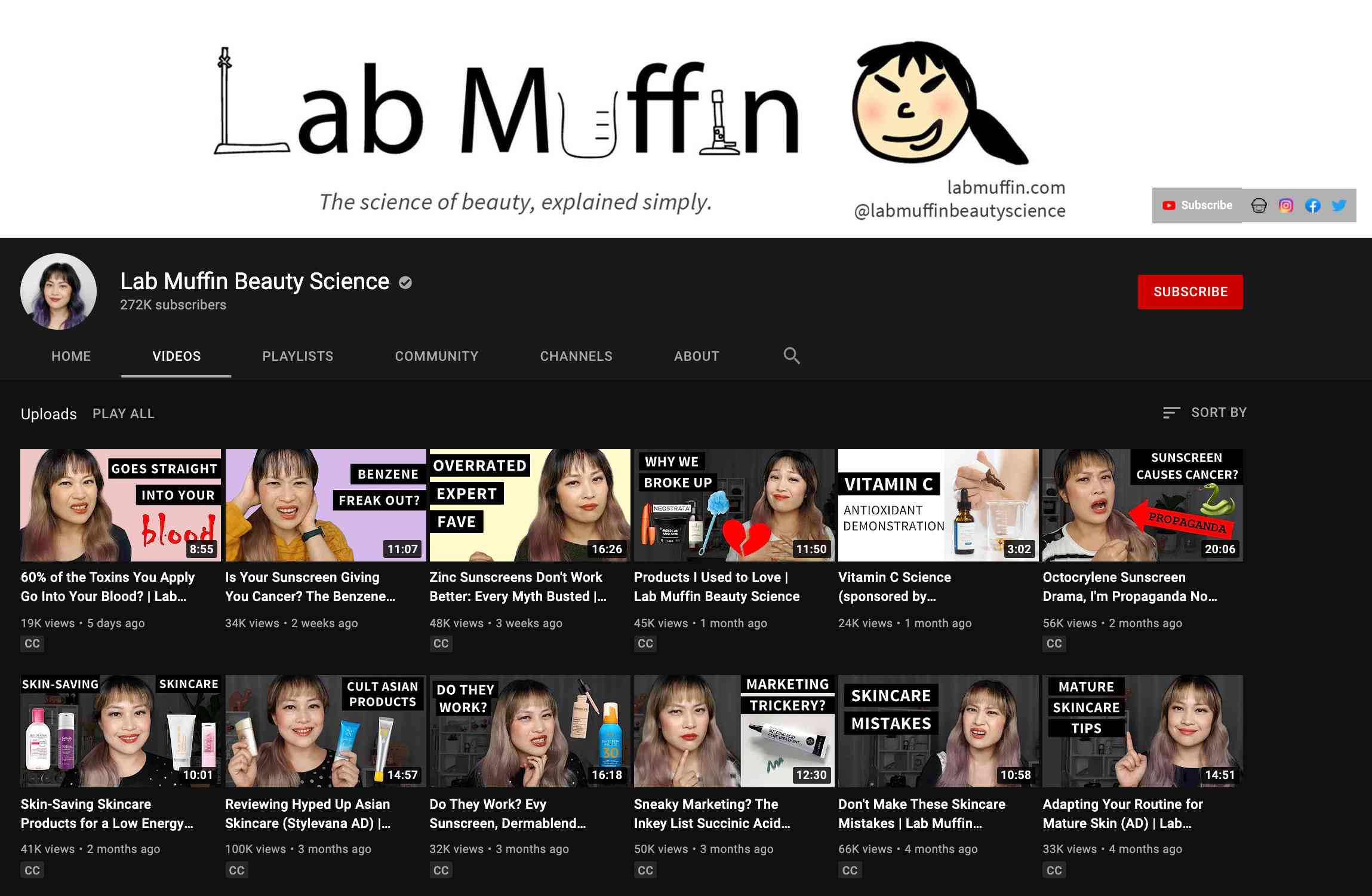Content marketing is the process of planning, creating, and sharing content with your target audience. It helps you generate brand awareness, convince customers to take action, and drive revenue.
There are various types of content marketing, like social media and blogs, but new trends and techniques emerge every year that change the ways businesses reach their audiences.
As a marketer, it’s essential to know what your competitors are focusing on, so you can create a strategy and stand out from the crowd. In this post, discover important stats to know about the state of content marketing in 2021 and trends to look out for throughout the year.
Content Marketing Stats to Know
- 47% of buyers view three to five pieces of content before engaging with a sales rep.
- 82% of marketers report actively using content marketing in 2021, up 70% from last year.
- Marketers’ primary goals for running marketing campaigns are brand awareness, increasing sales, and increasing engagement.
- Video is the most commonly used form of content marketing, overtaking blogs and infographics.
- Google's search algorithms are trying to transcend text to images, voice/podcasts, and videos.
- The top technologies used by B2B organizations to supplement content marketing are analytics tools, social media publishing, and email marketing software.
- The top three organic content distribution channels for B2B marketers are social media channels, email, and website.
Content Marketing Trends to Watch in 2021
1. Video takes center stage.
Media uploads increased by 80% YoY in 2020, as consumers spent most of their time at home passing time by watching content. Consumers watched 12.2 billion minutes of video in 2020 (as shown in the image below), equivalent to 23,211 years of content.

As a result of this changing consumer behavior, video is now the primary form of media used within any content strategy, taking center stage for the second year in a row.
As video consumption is now such an integral part of a consumer's journey, HubSpot Senior Copywriter and Brand Campaigns Manager Alicia Collins and Senior Motion Designer Megan Conley say, “This [consumer behavior] also indicates that video can be used throughout all parts of the flywheel...businesses have historically used it as a means of introducing their brand and product or service offerings. But that’s not the case anymore.”
The videos you decide to create and the places you choose to share it can depend entirely on your individual business needs. Some businesses are opting for shorter form videos on TikTok to raise brand awareness, as National Geographic has done in the video below.
@natgeo"How to photograph the night sky" with the expert himself! 📸🌌 #NatGeoTikTok #Photography #LearnOnTikTok
♬ original sound - National Geographic
Wistia found that long-form video is becoming more popular, making way for extended video length, as Patagonia has done in the video below.
2. Leveraging multimedia whenever possible.
In addition to video, it’s an increasingly popular strategy to incorporate multimedia into content whenever possible. Jason Lapp, President and COO of Beautiful.ai, says, “Video and photo-heavy social platforms have narrowed attention spans globally, forcing marketers to come up with new ways to break up text and increase content comprehension.”
Lapp adds, “Inserting multimedia — such as video clips and interactive slides — into text-heavy content will become a more popular way of engaging audiences and allowing readers to process material more easily.”
The gif below is an example of a blog post that has used an interactive video to further explain instructions given in the text.

3. Strategic SEO tactics.
In 2020, HubSpot VP of Marketing Matthew Howells-Barby said he wanted to see the number of marketers actively investing in SEO go up. His wish came true — 69% of marketers in 2021 report investing in SEO, up 5% just from 2020.
Marketers are making these investments to create tailored experiences for website users. However, the shift in 2021 is less about SEO optimization in general but instead focused on “Capturing niche and long-tail keywords and creating content that’s more engaging than all the ‘Ultimate Guides,’ and ‘Top 55,’ lists,” says Brooklin Nash, head of content at Sales Hacker.
Businesses are looking for a way to simply appear in SERPs and create in-depth content that is unique, valuable, and different from what competitors offer on those same result pages. 71% of marketers support Nash’s assertion, reporting that their business’ 2021 tactic for SEO is capturing strategic keywords.
4. Podcasting will grow immensely.
A content marketing trend to watch in 2021 is the rise of podcasts. Consider the following statistics:
- In October 2020, there were 34 million podcast episodes and over 1.5 million active shows.
- In under three years, podcast listening in the United States has increased by more than 60%.
- Big-name companies like Apple and Spotify are increasing their investments in podcasts and audio platforms.
- The podcast market is expected to reach more than 2 billion by 2023, meaning that marketers are preparing to devote significant time and money to the channel.
So, why are podcasts so popular with consumers? Firstly, there is something for everyone. With 72,000 new episodes per day (as shown in the graph below), the likelihood of finding an episode that appeals to their interests is incredibly high, whether it’s a mystery tale or a real-life story about how their favorite business was built.
We're now averaging ~72,000 new podcast episodes per day. Seems like a lot. pic.twitter.com/cUOd0pwq3H
— Chadd Hollowed (@ChaddHollowed) March 8, 2021
Second, podcasts feel like a conversation between the hosts and the listener. Rather than being talked at, listeners feel they’re being talked to and walked through the content in a more natural, human manner.
Businesses are investing in podcasts because they bring significant benefits: “Podcasts have the ability to drive real results and pay off in terms of leads and revenue,” says Zachary Bellinger, CRO at Casted. In fact, 53% of podcast listeners actually enjoy hearing ads during their listening experience, and 61% of consumers who hear these ads on a podcast were more likely to purchase a featured product, helping drive business revenue.
Holly Shannon, Producer and Host of the Culture Factor 2.0, says that podcasting is also a great way to use content to establish your business as a source of industry authority: “It can highlight you and your team as thought leaders. This allows you to speak authentically and bring your value to the table for all to hear globally.”
Featured Resource: How to Start a Podcast for Your Business
Learn everything you need to create, record, launch, and promote your podcast.
5. Content personalization.
Craig Davis, Former Chief Creative Officer at J. Walter Thompson, says, “We need to stop interrupting what people are interested in and be what people are interested in.”
A focus for marketers in 2021 is sharing content with consumers that is contextually relevant to their interests and shown to them at the right time. This means that you study your audience's likes, needs, and desires and share content that you know will speak to them. In turn, you’ll build brand loyalty, drive conversions, and generate revenue.
An example of leveraging this trend is studying user behavior on your website. If you notice that a browser lingers on specific product pages and places an item in their cart, lead them to those pages or products the next time they visit your site.
6. Valuable content trumps the quantity of content.
As businesses pivoted to entirely digital experiences in 2020, it became more important than ever to provide valuable content to consumers. This trend arises because, as consumers spent more and more time online, they see everything. If you post three Instagram stories per day and your competitors only posted one, what does it matter if your content didn’t provide your audience with any sort of value?
“Never before has ensuring your audience obtains true value from your brand meant so much,” says Kelly Hendrickson, Social Media Marketing Manager at HubSpot. For example, suppose your content marketing strategy focuses on your social media channels. In that case, you worry less about posting multiple times per day but instead about ensuring that the content you do share provides genuine value to your customers.
Lab Muffin Beauty Science, Michelle Wong’s YouTube channel, follows this strategy. She only posts once per week, and when she does, the videos are long-form, valuable pieces of content that teach her audience about something relevant to their interests.

7. Hosting virtual events and webinars.
A webinar is a video presentation, seminar, lecture, or workshop delivered to an audience digitally. Despite once being declared outdated, webinars have become extremely popular over the past year, again credited to COVID-19 health and safety regulations:
- Webinar platform BrightTalk reported a 76% increase in virtual events between March and June of 2020
- ON24 saw a 167% YoY increase in usage of their webinar tool.
Attending events digitally allowed consumers to continue to interact with their favorite businesses and continue to derive value from presenters and industry leaders. As safety restrictions are lifted, webinars and virtual events are still here to stay — the global webinar market is expected to reach 800 million by 2023, up 253 million from 2015.
The new ‘work from home’ model makes this possible because of the convenience of attending an event from wherever a consumer is located. Plus, the added bonus of being able to access content on-demand if they are recorded and shared.
HubSpot’s yearly INBOUND conference is usually an in-person event, but it has been virtual for the past two years. Although health and safety restrictions in the United States are being rolled back, this event will still be a fulfilling, three-day virtual immersive experience.

8. Repurposing existing high-value content.
As mentioned above, COVID-19 has pushed marketers towards prioritizing providing valuable content over anything, and repurposing content is a way to do so.
Nash says, “I’m most excited to see how content teams repurpose content instead of starting from scratch. In 2021, content teams will start figuring out how to most effectively use content from webinars, round tables, podcasts and conferences to stoke the content bonfire...We don’t have to reinvent the wheel, just get it turning faster.”
Repurposing content is re-using your existing content and presenting it in a new format. Essentially, since you’ve already created high-quality, valuable content that you know your audience enjoys, you expand its reach.
You can repurpose content in various ways, like creating a slide presentation from a top-performing blog post, sharing screenshots of reviews from product pages on your Instagram profile, or creating text transcripts of your podcast episodes.
Holly Shannon is a fan of repurposing podcasts because transcripts can be used as SEO-optimized blog posts, and audio clips can be used as subsequent social media posts. Glowing Up Podcast has done something similar to Shannon’s suggestion, and they’ve repurposed their podcast by taking video of their recording session and sharing the clip on their Instagram page.
Stay Up-to-date On Your Industry
It’s always important to stay up-to-date on what is happening in your industry, and being aware of these trends is a way to do so. Should you choose to leverage one of these trends in your marketing strategy, ensure that it’s relevant to your business needs and will help you achieve your goals.
If you want to learn more about the marketing industry, read this post about general marketing trends in 2021.
The State of Content Marketing in 2021 [Stats & Trends to Watch] was originally posted by Local Sign Company Irvine, Ca. https://goo.gl/4NmUQV https://goo.gl/bQ1zHR http://www.pearltrees.com/anaheimsigns


.jpg?width=351&name=podc%20(1).jpg)

No comments:
Post a Comment